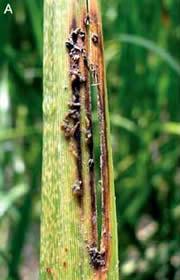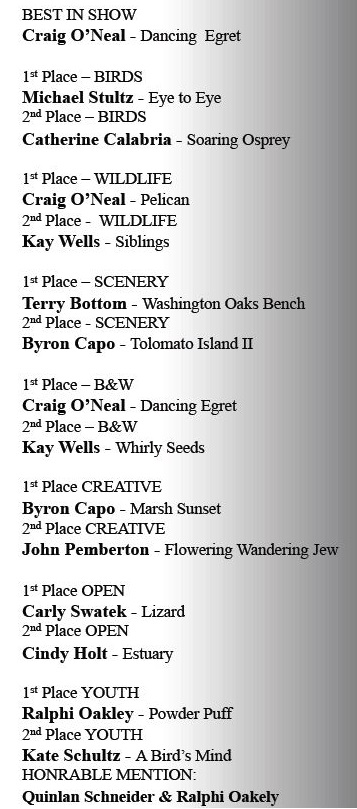Written by Josephine Thurmond, GTM Research Reserve Marineland Field Office Volunteer
The Guana Tolomato Matanzas National Estuarine Research Reserve (the GTM Research Reserve) is headquartered in Ponte Vedra Beach and has a field office in Marineland, Florida. The Reserve offers informative and engaging guided walks as part of its educational Docent Series. Tuesday April 4th, volunteer Ron Ceryak led a Marineland Guided Beach Walk on the ocean side of the River to Sea Preserve.
 |
Volunteer Ron Ceryak
Photo Courtesy of
Diane Reed 2013 |
Ceryak, formerly a hydrogeologist with the Suwannee River Water Management District, has an easy-going manner that helped create a conversational learning atmosphere on the walk. In one instance, he described Florida’s topography as essentially consisting of terraces of sand that built up in time over limestone rock. He said the coquina rock that makes up much of the beach in Marineland occurs in multiple layers, each often having a different chemical composition that can be determined by how quickly it breaks down.
Ceryak soon transitioned to identifying a piece of Sargassum seaweed. This led to a group discussion about the Sargasso Sea. This “sea within a sea” is uniquely defined by a convergence of ocean currents (the Gulf Stream, North Atlantic, Canary, and North Atlantic Equatorial Currents) rather than terrestrial boundaries. It is located in an area of ocean known as the Northern Atlantic Subtropical Gyre. Baby turtles hatched on local shores often make their way to the Sargasso Sea where they will grow up sheltered by a massive island of floating seaweed, centered in the gyre, until they are ready to head for the open ocean.
It is common during these guided walks to encounter people from many different backgrounds. One may find former
 |
Gopher Tortoise, one of many
inhabitants in the area
Photo Courtesy of Diane Reed 2013 |
teachers, current students, volunteers, families, retirees, and scientists sharing not only the experience of the moment, but often contributing to it as well. The friendly tone of the program encouraged participants to share relevant information among the group. Diane Reed, life-long birder and fellow GTM Research Reserve volunteer, expertly spotted and identified the remains of a razorbill lying in the sand. The razorbill, named for the sharp edges of its beak, is a small black and white bird of the puffin family that somewhat resembles a penguin. Though these birds are rarely seen south of Cape Hatteras, NC, they have recently been spotted as far south and west as Florida’s Gulf Coast. As reported in the news, they could have been blown off their migration course during hurricane Sandy. The storm might also have destroyed their food source, causing them to travel farther south to find sustenance. The lack of familiar resources and the exhausting excursion has killed many razorbills while others have ended up in rehabilitation centers around Florida.
Another fascinating aspect of this program is witnessing the ever-changing beach landscape. Ceryak pointed out that it is normal to see the beach drastically change from one guided walk to the next. This is largely due to powerful currents and weather patterns. Intense wave energy erodes the shoreline sands, while powerful longshore currents transport the sands in a southwesterly fashion. In fact, longshore currents are responsible for establishing much of Florida’s coastline, having transported and deposited sand and minerals worn away from the Appalachian Mountains. Weather conditions (such as hurricanes and Nor’easters) further affect the landscape of the beach. In essence, one could go on these walks often and encounter a new landscape each time.
 |
| Photo courtesy of the Florida Department of Environmental Protection |
The GTM Research Reserve’s Marineland Guided Beach, Trail, and Matanzas Inlet Walk program is a unique educational resource. The walks offer an opportunity to learn about the local environment, including habitat; why the habitat is the way it is; the animals it supports; the changes it endures; and how it relates to the human population. In all, a guided walk can provide an endless source of conversation for participants to take home.












